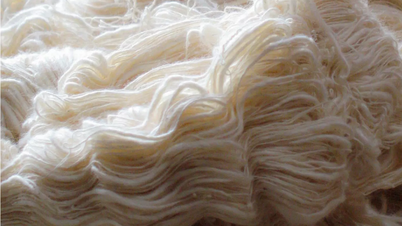
Illustration: Internet
I remember when I was a kid, when there was nothing to eat at home, I would carry a big bamboo basket to catch shrimp. When I passed by the dike road covered with weeds, I would not forget to call my friends to come with me. In the neighborhood, everyone was poor, so when they heard us shouting to catch fish or shrimp, they would immediately run after us. We chose the ditches in the sugarcane fields, where there were dry sugarcane leaves and dense seaweed.
I put the deep basket into the water, and filled it with seaweed and rotten leaves. One, two, three,... using all my strength, I lifted the bamboo basket up high. Oh my! The plump, fresh shrimp were jumping around, so fascinating to see. Wading through small canals, I had a decent amount of shrimp, enough for my family to eat for several days.
Looking back at my friends, they were no worse than me. I happily ran home, secretly happy that I didn't have to eat rice with boiled vegetables this afternoon. Scooping shrimp was easy but preparing it was very difficult. Mom carefully selected each piece of trash, washing it with lots of water to clean it. She chose the big shrimp, cut off the whiskers and then stewed them, while the small ones kept their whiskers on and used them to make other dishes.
From the seaweed shrimp, my mother processed many delicious dishes such as fried garlic, stir-fried with galangal leaves, fried with flour, steamed with rice paper, braised with dried leaves, made into pancakes, etc. Behind my house there is a wild sesbania bush, which blooms bright yellow every flood season. When there was a chance to have seaweed shrimp, my mother went right behind the house, picked a basket of sesbania flowers to stir-fry with the shrimp. This dish is very simple and quick to prepare. The seaweed shrimp and sesbania flowers when combined create a very unique flavor that goes well with rice.
Since I was little, I have been familiar with this dish, so I still remember my mother's recipe clearly. My mother put a pan on the wood stove, added 2 tablespoons of oil, sauteed garlic until fragrant, then added the seaweed shrimp and stir-fried until firm. Sprinkle a little salt and seasoning powder on the shrimp so that when the water mimosa flowers are added, they will have an impressive yellow color.
After a few minutes, Mom put the water mimosa flowers in the pan with the seaweed shrimp. Season to taste, to suit the family's taste. Mom stirred the mixture continuously until the spices were absorbed into the dish. The steps should only be done quickly within 10 minutes so that the water mimosa flowers do not become soft or discolored. Turn off the stove, serve the dish on the table! This dish is served hot with rice, vermicelli, rolled in rice paper or as an appetizer, all are delicious. The seaweed shrimp is slightly sweet and crispy; while the water mimosa flowers have a combination of astringent, sweet,... Every time the family has this dish, the rice pot is always empty.
Now I am far from home, but sometimes I still cook stir-fried seaweed shrimp with water mimosa flowers by myself from the ingredients that my mother took the trouble to send by bus from the countryside to the city. Although it is not as delicious as what my mother cooked, eating it reminds me of my hometown, my parents, and the taste of the alluvial soil of the fields. It is just a rustic dish but it makes my heart ache./.
Nguyen Hoang Duy
Source





![[Photo] Journalists moved to tears at the Memorial Service for the soldiers who died in Gac Ma](https://vphoto.vietnam.vn/thumb/1200x675/vietnam/resource/IMAGE/2025/5/30/9454613a55c54c16bf8c0efa51883456)
![[Photo] A delegation of 100 journalists from the Vietnam Journalists Association visits the soldiers and people of Truong Sa island district.](https://vphoto.vietnam.vn/thumb/1200x675/vietnam/resource/IMAGE/2025/5/30/0984a986227d4e988177f560d2e1563e)

















![[Photo] Prime Minister Pham Minh Chinh attends the event "Digital transformation of the banking industry by 2025"](https://vphoto.vietnam.vn/thumb/1200x675/vietnam/resource/IMAGE/2025/5/29/0e34cc7261d74e26b7f87cadff763eae)





























































Comment (0)